Power Tools
Although power tools can’t replace hand tools, they sure do make construction work easier and more efficient. It can be a real timesaver to not have to drag a cord behind you and yet have a tool with enough power to do a professional job. Nowadays there are numerous cordless tools powered by lithium-ion batteries that would be an asset when constructing a house. These include screwdrivers, reciprocating saws, and even circular saws. For years such tools were designed primarily for homeowner use, but today they are used on almost every jobsite. I wouldn’t want to be without them.
The circular saw has been around since the 1920s, but it didn’t really catch on until the housing boom began after World War II.
|
|
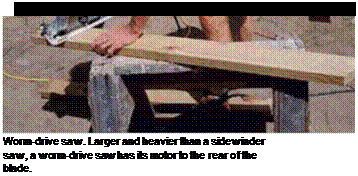 |
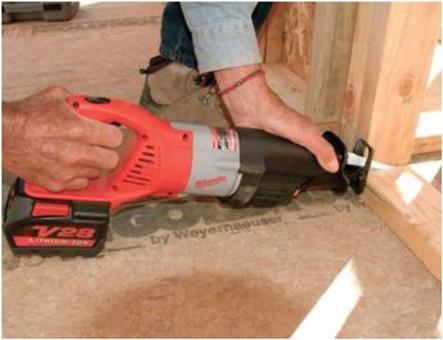
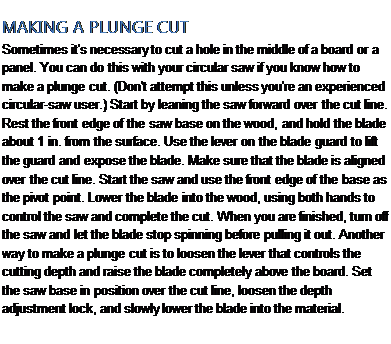
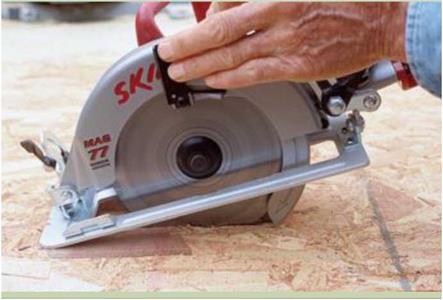
These days, many homeowners have one in the garage. For a builder, this portable power tool is indispensable. The most popular circular saws are designed to hold 71/4-in.-dia. blades. In the eastern part of the United States, most carpenters prefer direct-drive saws, often referred to as sidewinders (see the top photo on the facing page). In the West, carpenters mainly use the heavier worm-drive models (see the bottom right photo on the facing page). Check out both to see which one you prefer. Above all, buy quality. Light, low-priced homeowner models aren’t in the same league with professional models.
Here are some tips for using your saw safely and accurately. Some of them apply to other power tools as well. As with any power tool, be sure to study and follow the instructions in the manual.
• Make sure the blade guard works freely before using the tool.
• Use the right blade for the job, and replace a dull blade with a new one. Carbide-tipped blades are best for most wood-cutting work.
• To reduce friction when cutting, apply paste wax to both sides of the blade, or spray it with silicone.
• Adjust the saw’s cutting depth according to the thickness of the material. If you are cutting ‘A-in.-thick material, set the cutting depth at no more than 3/4 in. (see the top photo on p. 36). The less amount of blade that’s exposed, the less potential for injury should something go wrong.
• Always unplug your saw when changing blades and adjusting the cutting depth or angle.
• Make sure the stock is adequately supported. With proper support, the cut won’t bind on the blade, and the cut-off end will fall free.
• To begin a cut, place the saw base on the stock with the blade about 1 in. from the edge of the wood, aligned with the cut line. Hold the saw with both hands, pull the switch, and slowly push the blade into the wood, following the cut line. Go slowly, guiding the saw, and let it do the work. Eventually, you will
learn to cut with one hand on the saw and the other hand on the material.
• Don’t try to hold a short or small piece with one hand while guiding the saw with the other. Instead, use a clamp to secure the workpiece while you make the cut.







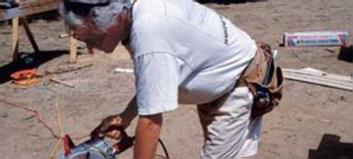
Leave a reply